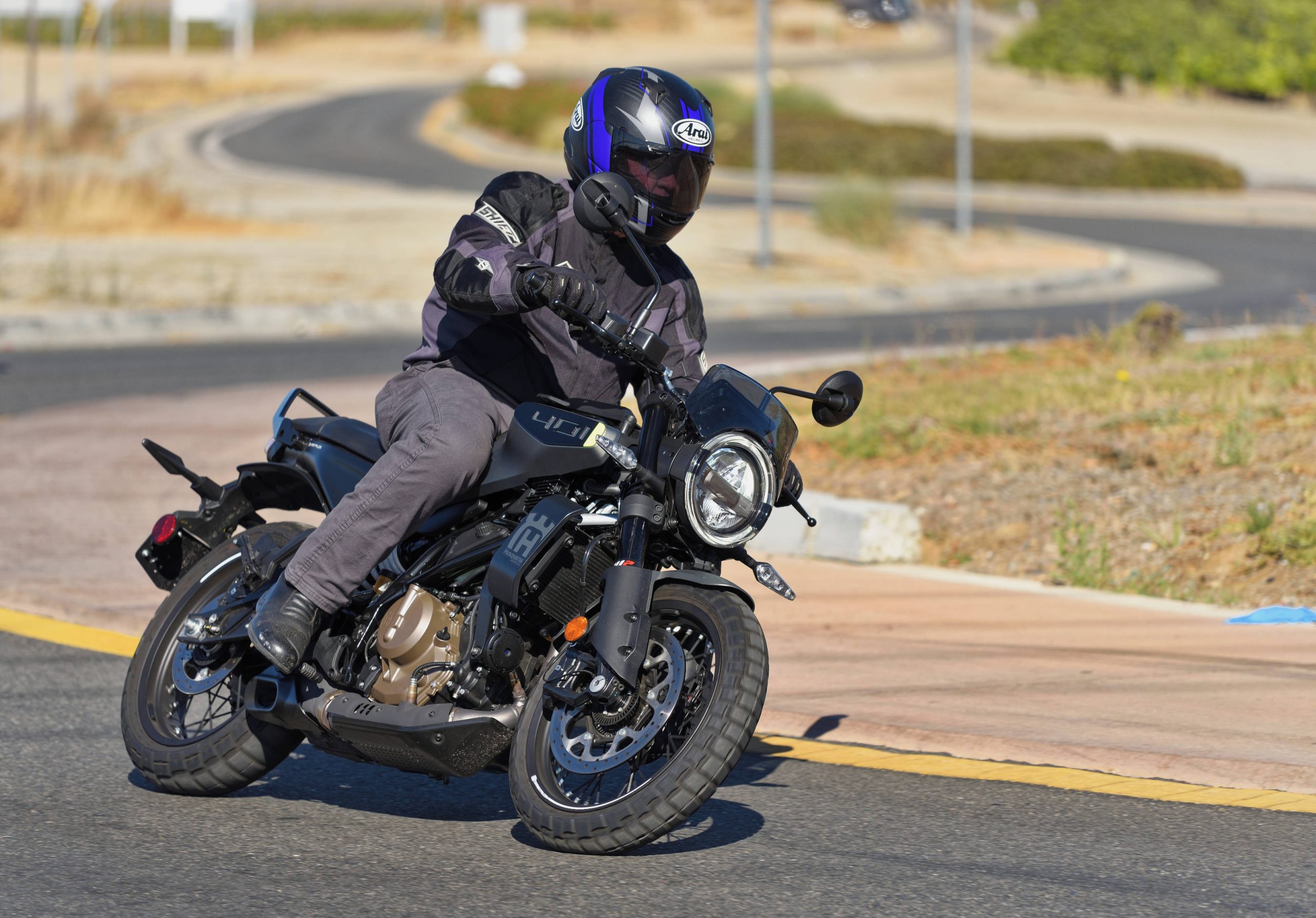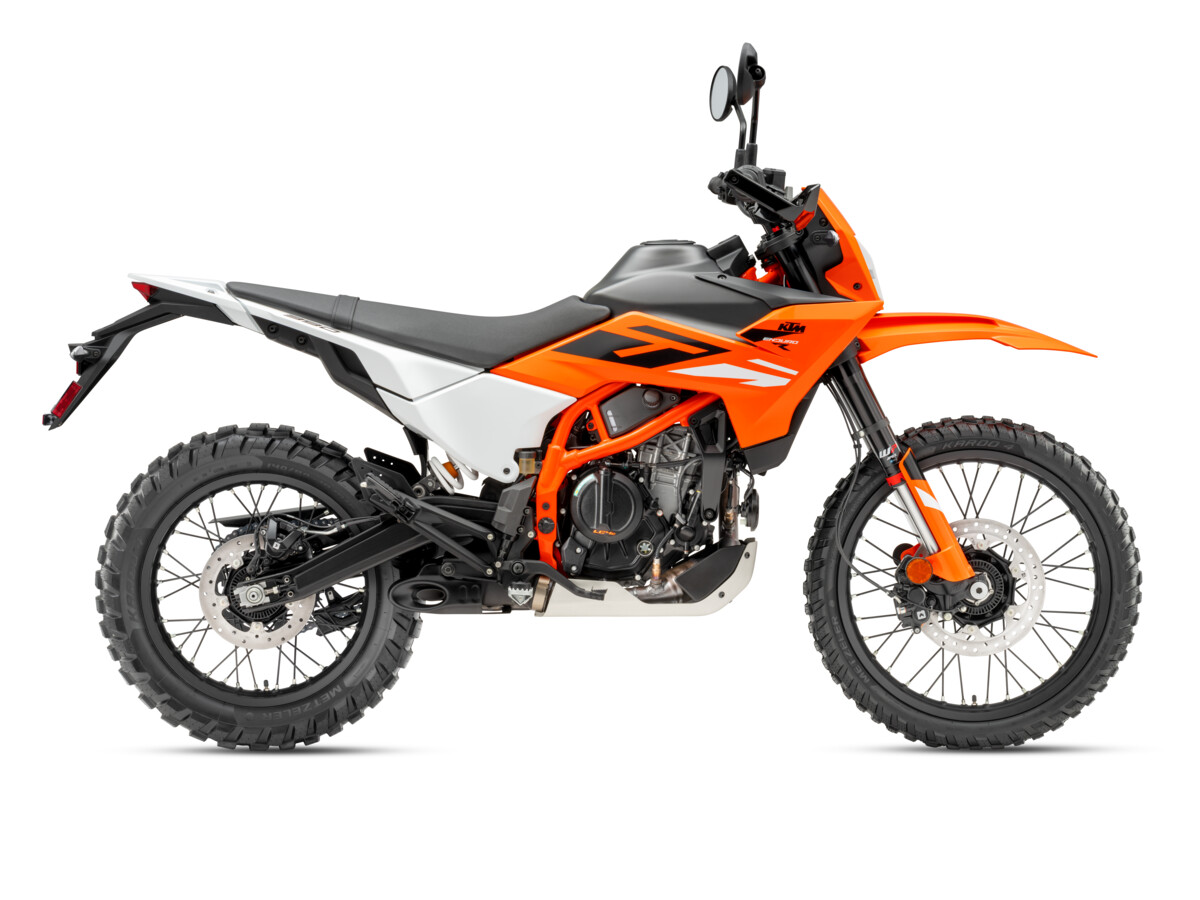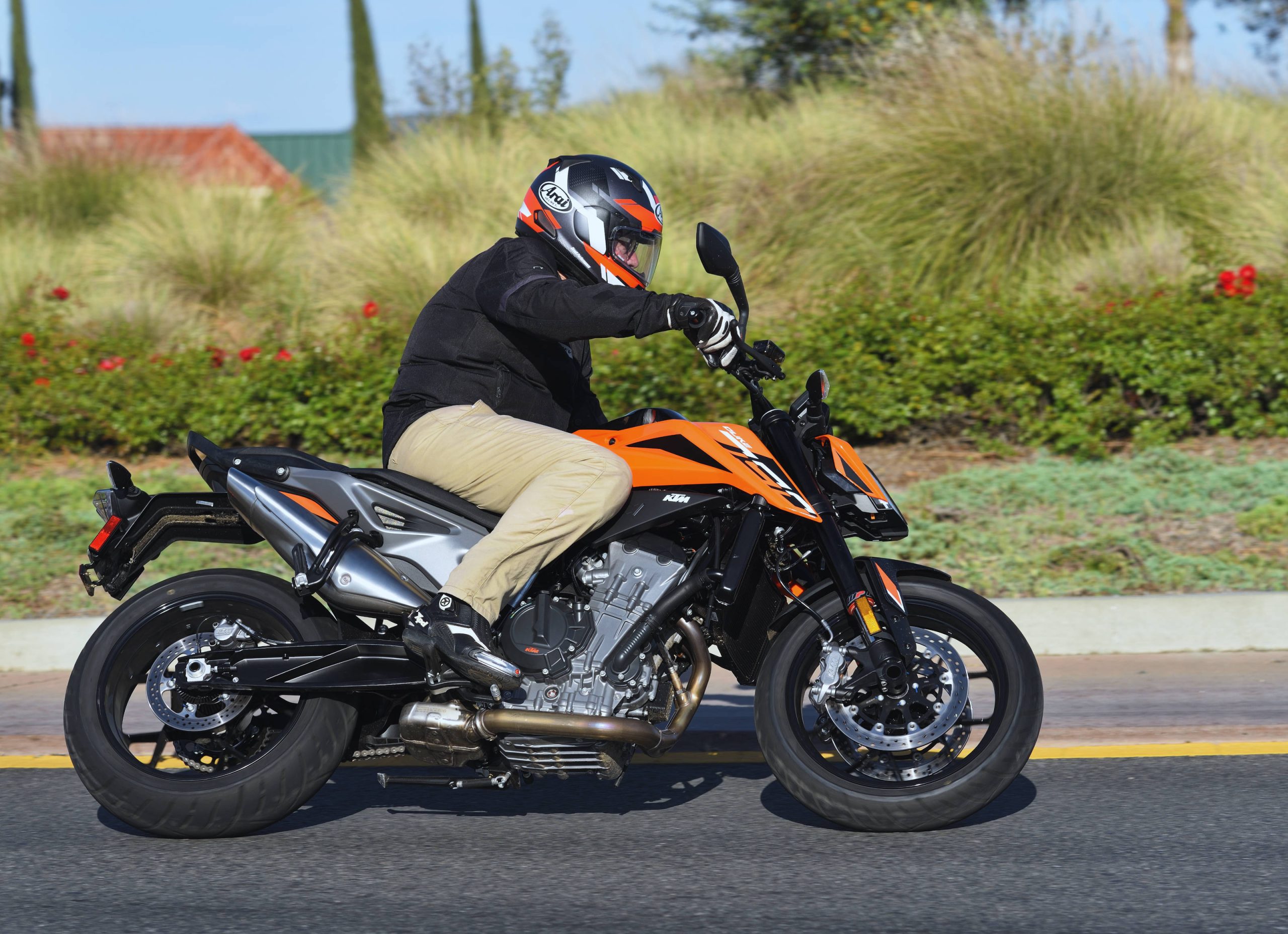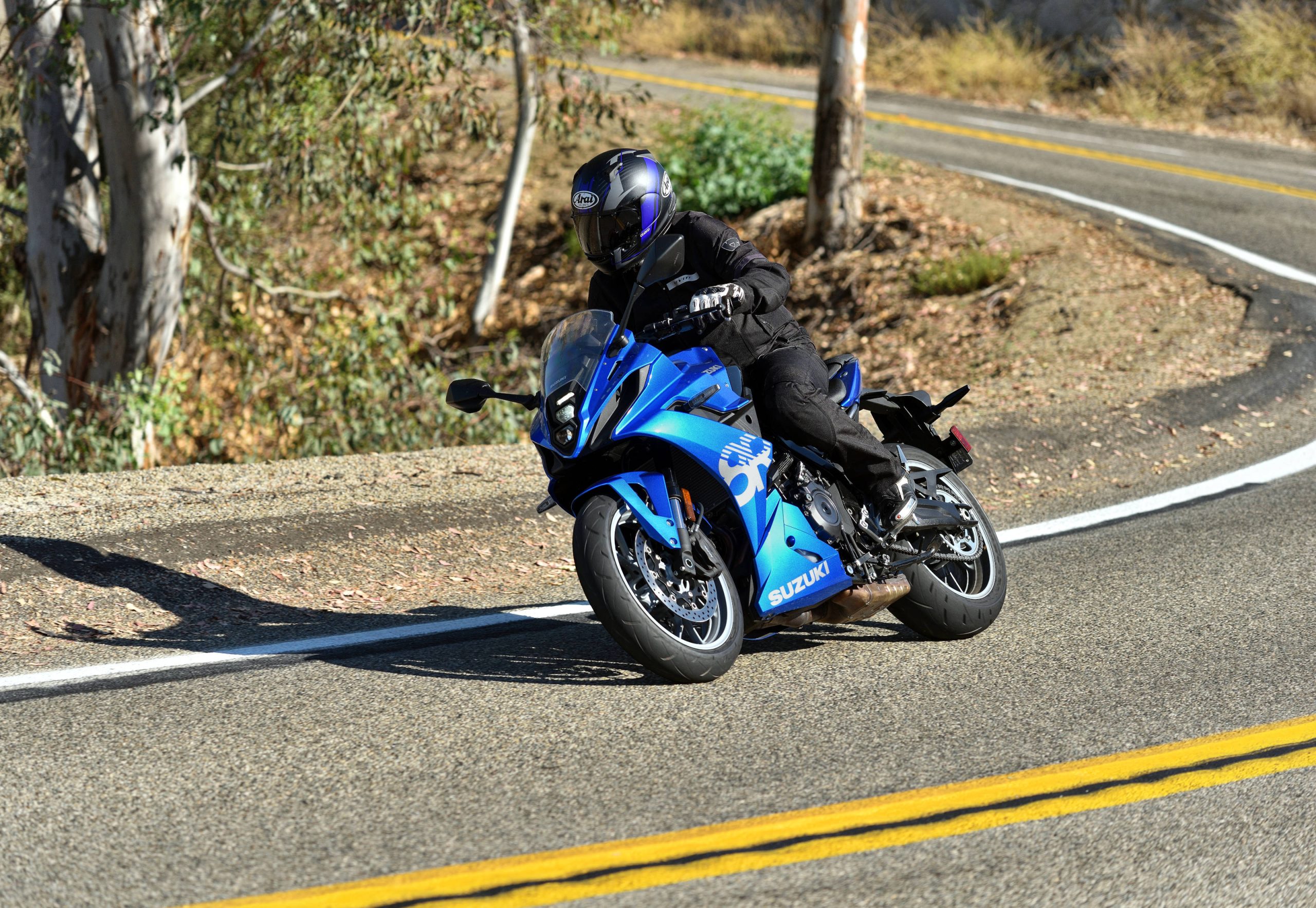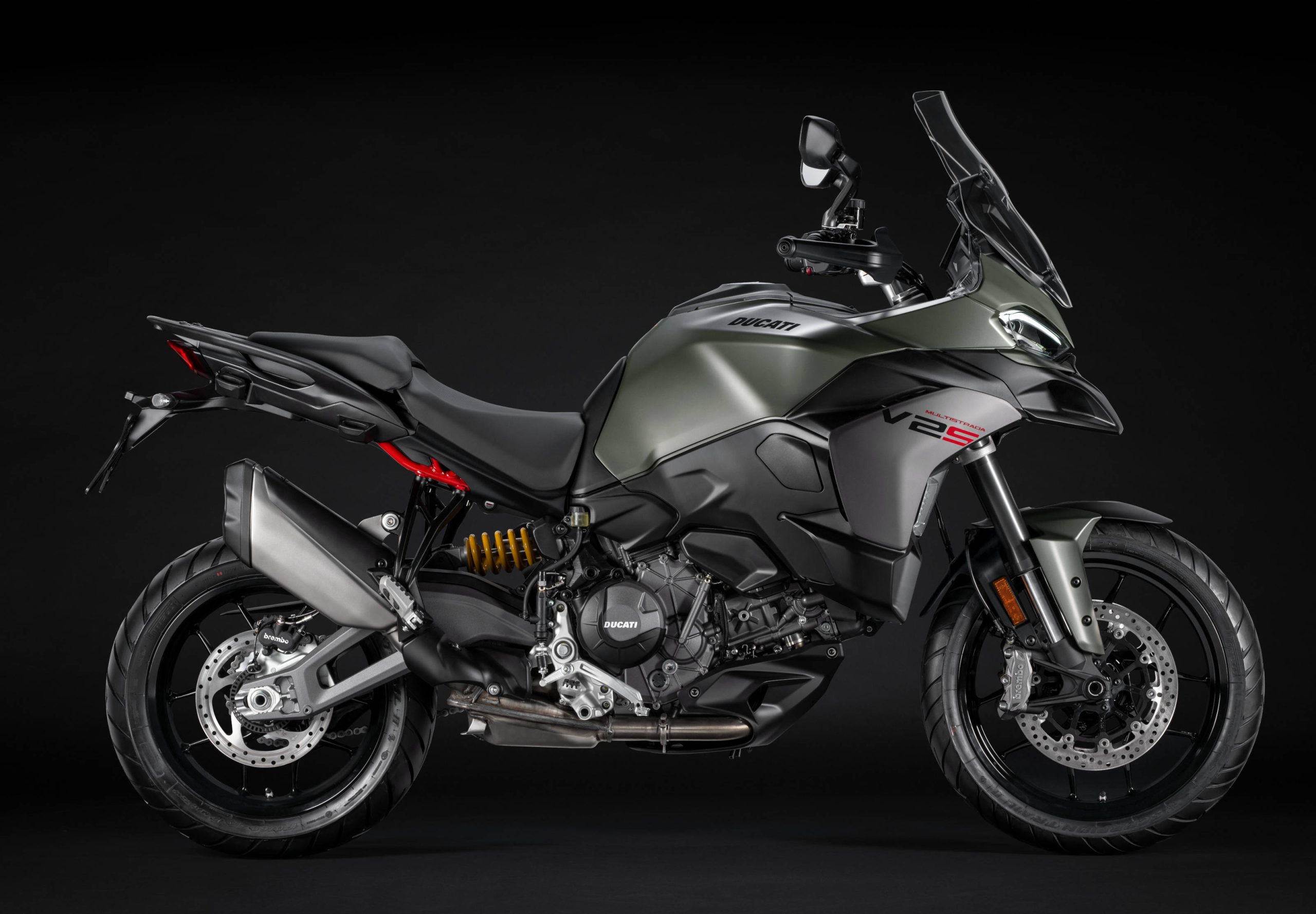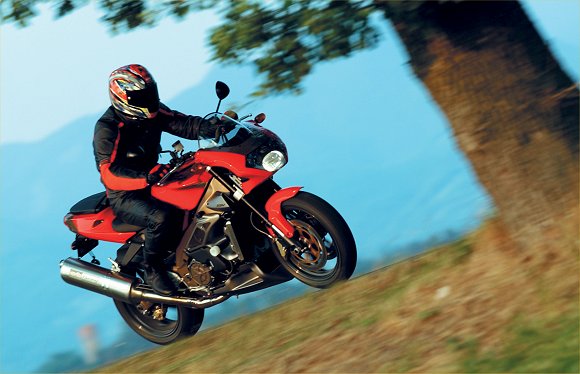
It never rains in Southern California . . . unless, you are trying to photograph an Aprilia Tuono. Most of the pictures you see in this article are courtesy of Aprilia’s press materials (although, we did manage one wheelie photo of yours truly — a rather blurry one). That’s right, we rode Aprilia’s mega-popular Tuono in stormy, wintery Southern California before requesting a few extra day’s possession from Aprilia to get our photos right. They declined . . . something about other motorcycle publications desperate to test the Tuono. Oh, well . . .
The standard Tuono we tested is, of course, the more affordable successor to the Tuono R released in 2002 (a limited series of 200 — it sold out in a few days). The standard Tuono has nothing to be ashamed of — that’s for sure. Essentially, the same bike without all the top drawer bolt-ons (forged wheels, Ohlins suspension and carbon fiber body parts, for instance). The Tuono is still quite a machine.
As we have written in the past, nakeds have received lower-spec motors and chassis than their sport bike counterparts. This rule is being violated more and more these days but, perhaps, the Tuono goes furthest towards providing the naked bike enthusiast with a full specification sport bike (minus all the plastic and the boy-racer ergonomics).

With a claimed 126 horsepower at the crank (very close to the standard output of the Mille, itself), the Tuono is not about “de-tuning for midrange” that you so often read in a manufacturer’s hyperbole about their latest-and-greatest naked bike. No, the Tuono offers the uncensored version of the Mille performance, both from its engine and its chassis.
At a claimed 410 pounds dry, the Tuono is one of the lightest, open-class naked bikes you can buy. It also has a specification sheet that will drop your jaw.
As we said, this is essentially a Mille without the extra body work. With the same engine, chassis and suspension as the superbike considered by many to be the finest production bike of its kind, the Tuono will satisfy the naked bike enthusiast looking for ultimate engine performance and handling.
You may be familiar with the Mille, but let’s go through the specification sheet, nonetheless. The sixty degree v-twin has four valves per cylinder and double-overhead cams. It is fed by 51mm throttle bodies through an electronic fuel injection system featuring one injector per cylinder. The engine also features twin spark plugs per cylinder (for more efficient combustion) and dry sump lubrication for a more rigid and compact engine sump (a feature found on many race bikes).
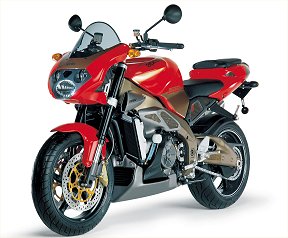
Aprilia also justifiably brags about its patented vibration reduction system (sixty degree v-twins can be pretty unruly — but this machine is silky smooth) and its carefully developed clutch (featuring “pneumatic power”) to control rear wheel bounce.
The only difference between the engine in the Tuono and the engine in the Mille superbike is a slightly different intake manifold design and engine mapping. Having ridden the Mille R (see our review here), the Tuono feels just as quick and, perhaps, even smoother than its superbike sibling.
The chassis also comes directly from the Mille superbike, and features one of the stiffest production motorcycle frames in existence. The frame is anodized in a bronze-titanium color, and features the same sexy curves and angles as the Mille frame, of course.
Although lacking the Ohlins suspension components featured on the R version, the standard Tuono nevertheless has top-drawer stuff (particularly, for the naked bike class). Both the Showa upside-down fork and the Boge rear shock are adjustable for preload, compression and rebound, while the shock is also adjustable for ride height (try to find that on another naked bike).
The brakes include Brembo Gold calipers squeezing 320mm floating stainless steel disks in front, and a single Brembo Gold caliper squeezing a 200mm stainless steel disk out back.
When you sit on the Tuono, you notice the machined aluminum upper triple clamp and bar mounts. They are simply stunning (and I apologize for not having a decent photo of this set-up). The gold handlebar held by these components is attractive, and, after being rotated backwards several degrees (I didn’t like the position it was delivered in), provides for a proper, upright riding position. The ergonomics also feature a slim fuel tank (easy to grip with your knees), a relatively comfortable seat, and pegs that are lower than a sportbike (but, perhaps, a bit higher than your average naked). The only significant, negative comment I can make about the ergonomics concerns the right footpeg relationship with the heat shield on the exhaust. Having fairly big feet (size 11), I found my heel resting on the exhaust heat shield, which was a bit annoying (eventually, I got used to it and ignored it).

Lest you doubt the racing heritage of the Tuono, you should also note that it comes with a lap timer and a steering damper as standard equipment. The lap timer is part of a very thorough instrumentation package housed behind the mini-fairing (which is remarkably effective at keeping wind blast off your chest on the freeway).
First impressions while riding the Tuono are of its stiff, precise chassis. Having ridden several naked bikes, the Tuono immediately feels almost a bit harsh — the stiff chassis and sportbike-tuned suspension do not ride like the other, somewhat-flexy, steel-framed nakeds I am familiar with. This is a very serious go-fast machine, and it feels like it.
The wide dirt bike-style handlebars provide plenty of leverage to change directions (making the Tuono feel even more nimble than the Mille superbike). The engine pulls smoothly and strongly — eventually ending with a huge top-end rush of power. The bike may feel a tiny bit soft on the bottom compared with some of the “tuned for torque” naked competition, but the mid-range and top-end power delivery is literally breath taking. Indeed, this is a naked bike for an experienced, skilled rider who can really use and enjoy a stiff, precise, revvy superbike-style riding experience.
Like the Mille R we tested, the six-speed transmission worked well, and the gear ratios appeared well spaced (not too difficult to do with the flat torque curve found on this bike). The suspension is well damped for aggressive riding (although, a bit stiff for touring).
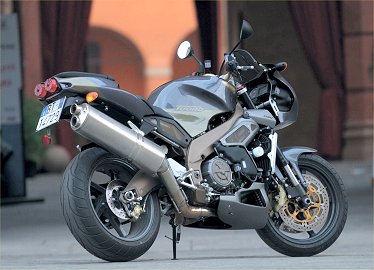
Basically, this bike is not in its best element cruising down the boulevard. It likes to be thrashed. It is, after all, a superbike with relaxed ergonomics. If you love sportbikes, but hate their ergonomics, this is your bike.
When you push the Tuono, it responds beautifully. You are not going to reach the limits of this bike’s performance potential on the street. If you are not an aggressive rider, and your idea of a naked bike is a Bandit 600, the top-end rush of power will probably intimidate you.
On the other hand, this bike was made for the rider who likes to do wheelies and stoppies. Those brakes really deliver, with outstanding power and feel. Again, the brakes are there for you when you push the Tuono hard.
Is this the ultimate naked? It depends. If your idea of riding is cruising around with your buddies, never going too fast through the corners, and stopping for coffee and doughnuts on the way, probably not. If you are a skilled rider looking for the handling and power of a superbike in a more comfortable package, probably so. The looks and exclusivity of the Tuono will attract riders of all skill levels, of course.
With an U.S. MSRP of $11,999, the available colors include the Tulip Red and Magnet Grey shown. Demand for the bike has exceeded supply (at least, initially), so check with your local Aprilia dealership over the phone before you walk in expecting to find one.

